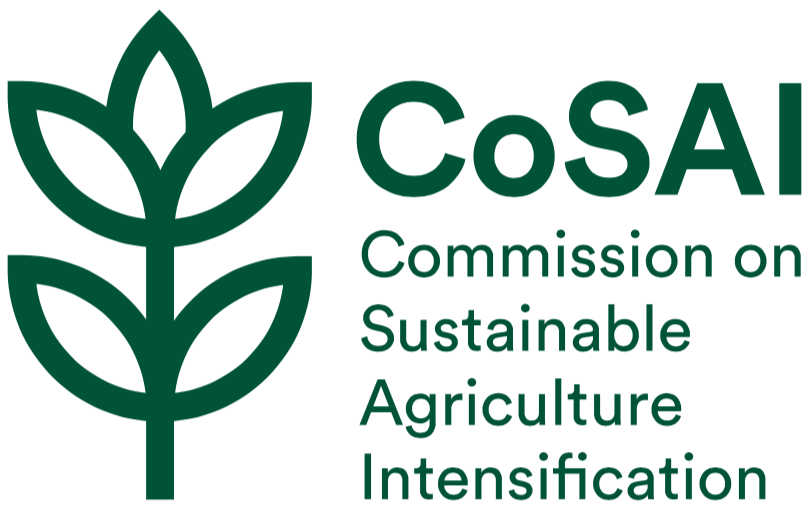Case Study: Finance for sustainable agricultural intensification
View results in:
https://www.iwmi.cgiar.org/archive/cosai/sites/default/files/CoSAI_Finance%20Case%20Study_0/index.pdf

Licensing of resource:
Rights subject to owner's permission
Type:
case studies
Author(s):
Dalberg Asia
Publisher(s):

Description:
To meet the growing demand for food in the Global South in a sustainable manner, current funding in agricultural innovation will need to be increased exponentially. Some estimates suggest up to USD 320 billion annually is required to help meet the UN SDG Goals for food and agriculture by 2030. Current levels of funding for agriculture and agricultural innovation fall far short of this and hence efforts to induce more funding for these goals, including through the use of new financing instruments1, is critical going forward.
Funding in market research, fundraising, transaction management, investment management are essential in order to increase the amount of capital deployed through innovative instruments. Different categories of funders, including PE/VC funders, impact funders, development funders make funding in market research to assess funding potential and develop an investable pipeline, spend time to raise funds from LPs (limited partners), incur costs associated with investment transactions (due diligence, legal filings, and so on), and finally incur costs related to managing investments through their fund lifecycle. An assessment of the existing level of these costs is important to understand upstream drivers of innovative funding for sustainable agriculture overall.
The study estimates that between USD 1.8 – 2.5 billion was funded annually in agricultural innovation between 2010-2019 for the Global South through new innovative financial instruments
as described in Table 1 below. A large majority of this came from private equity and venture capital players and a smaller fraction came from Development Funders.
The study estimates that between USD 950 million to USD 1.35 billion was funded annually to set up and deploy new financing instruments for agricultural innovation in the Global South between 2010-2019. Out of this, a majority was funded by PE/VC/impact funders and approximately 20% by development funders. A majority of this was towards personnel costs working in these organizations.
Publication year:
2021
Keywords:
Finance
Related Resources
Construcción del sistema y de la política de seguridad alimentaria y nutricional: la experiencia brasileña
Súmario: 1 Antecedentes. 2 El hambre cero. 3 Conceptos y principios. 4 Estado y sociedad en la promoción de la seguridad alimentaria y nutricional. 5 Desarrollos y desafíos en el combate a la inseguridad alimentaria y nutricional. 6 Características del...
Publication year:
2009- Link to web resource
Diseño de una Agenda de Extensión Rural Latinoamericana para un Desarrollo Rural Inclusivo. La Extensión como parte de un Sistema de Innovación
El presente documento es elaborado en el marco del diseño de una Agenda de Extensión Rural Latinoamericana que contribuya a un desarrollo inclusivo. En esta etapa la Red Latinoamericana y del Caribe para Servicios de Extensión Rural, constituida en Noviembre...
Publication year:
2011Author(s):
Avendaño L. R.
- Link to web resource
Les jeunes et l’agriculture
Cette publication offre de nombreux exemples concrets détaillant différentes manières de réengager les jeunes dans le secteur agricole. Elle montre à quel point des programmes éducationnels sur mesure peuvent offrir aux jeunes les compétences et la perspicacité nécessaires pour se...
Publication year:
2014- Link to web resource
Case Study: International Fund for Agricultural Development (IFAD) investment in innovation for sustainable agricultural intensification
The only specialized multilateral development institution focused exclusively on rural development, IFAD has successfully used agriculture as a means of poverty reduction – contributing ~USD 22 billion in funding to date1. About 90% of IFAD's portfolio is focused on Low...
Publication year:
2021Author(s):
Dalberg Asia
- Link to web resource
La gestion des ressources en eau dans les États de la Paraiba et du Rio Grande do Sul
Au Brésil, la diffusion du modèle de gestion intégrée des ressources en eau varie fortement selon l’environnement socio-territorial. Le Sud présente un dynamisme certain s’appuyant sur des initiatives locales. Les acteurs locaux sont organisés en comité de bassin et développent...
Publication year:
2007Author(s):
Laurent F.
Vianna P.
Verdum R.
Mello I.
- Link to web resource
